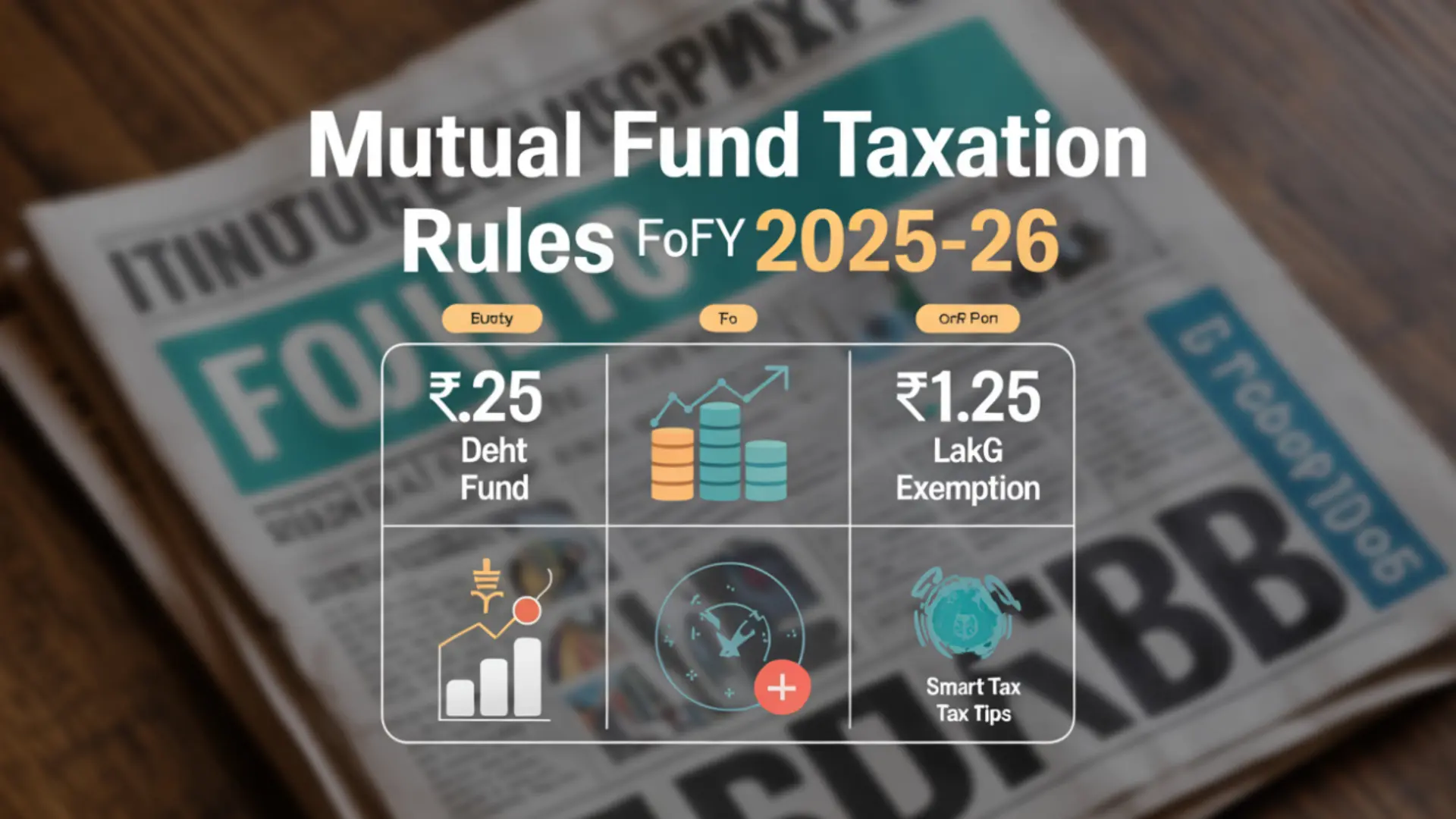Table of Contents
- Quick Snapshot of the New Tax Rules
- Equity Mutual Fund Taxation (2025–26)
- Debt Mutual Fund Taxation (2025–26)
- Real-Life Example – Ananya’s Portfolio
- Pros & Cons of the New Rules
- FAQs
- Final Word
New rules effective from 23 July 2024 change how your mutual fund gains are taxed in FY 2025–26. Here’s a simple, investor-friendly guide to what you actually keep in your pocket.
Are your mutual fund returns safe from taxes?
The truth is, your profits don’t just depend on market performance, but also on how much tax you pay. With the new mutual fund taxation rules from 23 July 2024, the way your gains are taxed in FY 2025–26 has changed. Let’s break it down so you can plan smarter and keep more of your money.
Quick Snapshot of the New Tax Rules
| Fund Type | Holding Period for LTCG | LTCG Tax Rate | LTCG Exemption | STCG Tax Rate | Indexation Benefit |
|---|---|---|---|---|---|
| Equity Funds | > 12 months | 12.5% | ₹1.25 lakh / FY | 20% | ❌ |
| Debt Funds | Any | Taxed at slab rate | ❌ | Slab rate | ❌ |
📈 Equity Mutual Fund Taxation (2025–26)
Long-Term Capital Gains (LTCG) on equity units (held > 12 months) are taxed at 12.5%. The first ₹1.25 lakh of net LTCG in a financial year is exempt.
Short-Term Capital Gains (STCG) on equity units (held ≤ 12 months) are taxed at 20%.
LTCG if > 12 months
12.5% (after exemption)
20%
Not available
💵 Debt Mutual Fund Taxation (2025–26)
All gains from debt mutual funds (regardless of holding period) are treated as short-term and taxed at your income tax slab rate. For investments made on or after 1 April 2023, indexation benefits are not available.
🔍 Real-Life Example – How Much Tax Will You Pay?
Meet Ananya—she invested in both equity and debt funds:
1) Equity Fund (Held 18 months)
- Invested: ₹5,00,000
- Sold for: ₹7,00,000
- Gain: ₹2,00,000
- Tax-free LTCG limit: ₹1,25,000
- Taxable LTCG: ₹75,000 × 12.5% = ₹9,375 tax
2) Debt Fund (Held 3 years)
- Invested: ₹3,00,000
- Sold for: ₹4,00,000
- Gain: ₹1,00,000
- Tax at 30% slab = ₹30,000
✅ Pros & ❌ Cons of the New Rules
Pros
- Higher LTCG exemption: ₹1.25 lakh per year.
- Preferential rate on equity LTCG: 12.5%.
- ELSS continues to offer a Section 80C deduction.
Cons
- Higher STCG on equity (now 20% vs earlier 15%).
- Debt funds are taxed fully at the slab rate, no indexation.
- Tax planning for mixed portfolios becomes more complex.
❓ FAQs on Mutual Fund Taxation 2025–26
Q1: What qualifies as an equity mutual fund?
Funds that invest 65% or more in Indian equities.
Q2: Is dividend income from mutual funds tax-free?
No. Dividends are taxed at your slab rate. TDS may be deducted, but you must still report it in your ITR.
Q3: Do I need to file ITR even if TDS is deducted?
Yes. TDS is only a partial withholding. You must compute and report your final tax liability.
📌 Final Word – Tax-Smart Investing Matters
In FY 2025–26, equity mutual funds remain more tax-friendly than debt funds when held for over a year. The new ₹1.25 lakh LTCG exemption is a significant plus for long-term investors. If you hold sizeable debt allocations, expect lower post-tax returns—diversify wisely and pay attention to holding periods.
Disclaimer: This article is for educational purposes only and is based on rules stated to be effective from 23 July 2024 for FY 2025–26. Tax laws can change, and personal situations differ. Please consult a qualified tax professional before acting.

